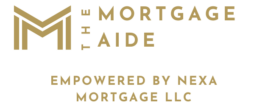Home Equity Line of Credit (HELOC)
Highlights of the HELOC
(1) Works like a revolving credit and you only pay interest on the amount you use (2) Typically have lower interest rates compared to credit cards or personal loans (3) The interest paid may be tax-deductible if the funds are used for home improvements or renovations

Eligibility
HELOC programs can vary between lenders. Here are some of the common eligibility requirements for the HELOC program. Select ‘Get Started’ to check if you’ll be a good fit.
Typically need at least 15% to 20% equity in your home after accounting for the HELOC.
Equity is calculated as the difference between your home’s market value and your existing mortgage balance.
Most lenders require a credit score of at least 620, though higher scores (700+) may qualify you for better interest rates and terms
Your DTI ratio should typically be 43% or lower, though some lenders may allow slightly higher ratios with compensating factors
Some lenders have a minimum initial withdrawal amount when opening a HELOC, such as $10,000, depending on their policies
May require a home appraisal or property valuation to determine the current market value and ensure sufficient equity
Typically require a clean credit history, with no recent bankruptcies, foreclosures, or significant delinquencies
Common Questions
How is a HELOC different from a home equity loan?
A HELOC is a revolving line of credit with a variable interest rate, while a home equity loan or HELO is a loan, providing a lump sum upfront with a fixed interest rate and consistent monthly payments.
How much can I borrow with a HELOC?
The amount depends on your home equity and the lender’s loan-to-value (LTV) ratio requirements. Most lenders allow you to borrow up to 80%–85% of your home’s value, minus your existing mortgage balance.
What are the interest rates for a HELOC?
HELOCs usually have variable interest rates tied to a benchmark like the prime rate. Rates can fluctuate over time, but some lenders offer fixed-rate options or rate caps for predictability.
Is HELOC interest tax-deductible?
The interest on a HELOC is typically tax-deductible if the funds are used for home improvements or renovations. Consult a tax advisor for specifics regarding your situation.
Is there a fee if I close my HELOC early?
Many lenders charge an early closure fee if you close your HELOC within a specific time frame, usually 2 to 5 years after opening the account.
These fees can range from $300 to $1,000 or more, depending on the lender and loan amount.
Other Info
HELOCs have two phases:
- Draw Period: Typically lasts 5–10 years, during which you can borrow as needed and make interest-only payments (though some lenders may require principal payments as well).
- Repayment Period: After the draw period, you repay the remaining balance, usually over 10–20 years. Monthly payments will increase as you start repaying both principal and interest.
Beyond early closure fees, some lenders charge inactivity fees if you don’t use your HELOC for a certain period. Check your loan terms for details.
